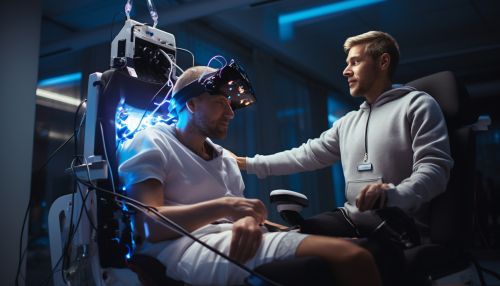Rehabilitation in Neurology
Introduction
Rehabilitation in neurology, also known as Neurorehabilitation, is a complex medical process which aims to aid recovery from a nervous system injury, and to minimize and/or compensate for any functional alterations resulting from it.
Overview
Neurorehabilitation works with the skills and attitudes of the disabled person and their family and friends. It promotes their skills to work at the highest level of independence possible for them. It also encourages them to rebuild self-esteem and a positive mood. Thus, they can adapt to the new situation and become empowered for successful and committed community reintegration.
Neurological Disorders and Rehabilitation
Neurological disorders are diseases of the brain, spine and the nerves that connect them. There are more than 600 diseases of the nervous system, such as brain tumors, Epilepsy, Parkinson's disease, and Stroke. These disorders lead to a need for neurological rehabilitation. Neurological rehabilitation (rehab) is a doctor-supervised program designed for people with diseases, trauma, or disorders of the nervous system.


Neurological Rehabilitation Team
A neurological rehabilitation team may include, but is not limited to, any of the following:
- Physiatrist: A doctor who specializes in physical medicine and rehabilitation.
- Neurologist: A doctor who specializes in the diagnosis and treatment of nervous system disorders.
- Rehabilitation nurse: A nurse who specializes in helping people with disabilities and chronic illness attain optimal function, health, and adapt to an altered lifestyle.
- Physical therapist: A therapist who specializes in improving motor function.
- Occupational therapist: A therapist who helps the person to perform all types of activities.
- Speech-language pathologist: A therapist who helps the person with speech and communication.
- Social worker: A professional who provides services and counseling to help deal with social, emotional, and environmental problems.
Techniques in Neurorehabilitation
Neurorehabilitation employs a multitude of therapeutic techniques to improve function, including:
- Physical therapy: This includes therapeutic exercise, cardiovascular endurance training, and training of activities of daily living.
- Occupational therapy: This therapy helps to improve the individual's ability to perform tasks in living and working environments.
- Speech therapy: This therapy helps regain and increase the ability to speak clearly and swallow properly.
- Cognitive therapy: This therapy helps improve memory, attention, perception, learning, planning and judgment.
Neurorehabilitation Devices
Neurorehabilitation devices are instruments used by therapists to monitor, analyze and enhance body movement and function. These devices include:
- Robotic exoskeletons: These devices are wearable robots that assist in limb movement.
- Functional electrical stimulation devices: These devices use electrical stimulation to enhance functional abilities.
- Virtual reality systems: These systems use computer-based applications to create simulated environments for therapy.
Future of Neurorehabilitation
The future of neurorehabilitation is promising, with ongoing research into new therapies and devices. This includes the use of stem cells for repairing damaged brain tissue, and the development of new and more effective drugs.
